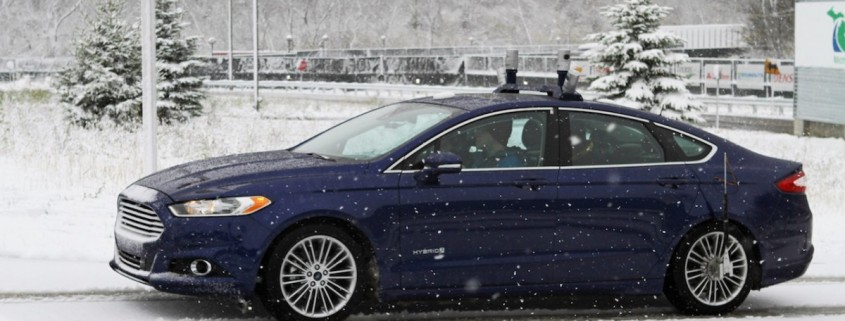How Ford’s New Driverless Car Algorithm Can ‘See’ Raindrops and Snowflakes
Jennifer van der Kleut
There have been several news reports about the progress Ford Motor Co. is making in helping their driverless test cars to perform safely in inclement weather such as rain, snow and ice.
A new report says they have taken that progress to a new level, with a special algorithm that allows the car to “see” falling rain, snow or ice.
As Quartz explains, “Ford’s autonomous cars rely on LiDAR sensors that emit short bursts of lasers as they drive along. The car pieces together these laser bursts to create a high-resolution 3D map of the environment. The new algorithm allows the car to analyze those laser bursts and their subsequent echoes to figure out whether they’re hitting raindrops or snowflakes.”
In other words, Ford’s autonomous software is becoming so advanced, it can now sense the difference between different things in the environment surrounding the moving car, such as potholes, obstacles in the road, and even different types of precipitation.
As Quartz explains, it all allows Ford’s systems to create a more detailed, complete picture of its surroundings.
“When a laser goes through the rain or snow, part of it will hit a raindrop or snowflake, and the other part will likely be diverted towards the ground. The algorithm, by listening to the echoes from the diverted lasers, builds up a picture of the ‘ground plane’ as a result, said Jim McBride, technical leader for autonomous vehicles at Ford.”
Ironically, as The Inquirer explains, “Ford got a little too good with Lidar sensors and found they were identifying snowflakes and raindrops as obstacles. This returned false information to the autonomous system, giving the impression that precipitation should be avoided.”
So, Ford partnered with the University of Michigan to help develop and fine-tune the new technology.
The Inquirer reports, the technology is also proving helpful in other ways. For example, the sensors can sense landmarks and other points of interest on the horizon, and “these are then contrasted against the 3D map information, which Ford claims is able to provide more accurate positioning than GPS.”
Check out some of the new technology, which Ford has affectionately dubbed “Snowtonomy,” in their video below.


